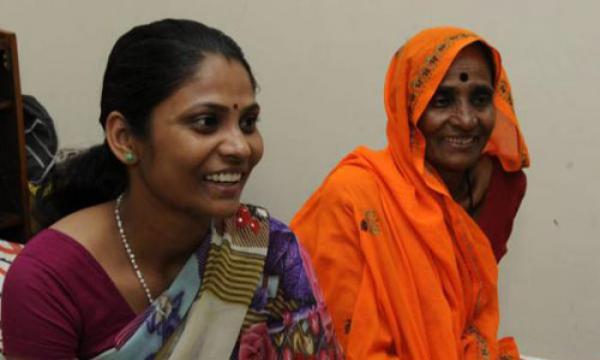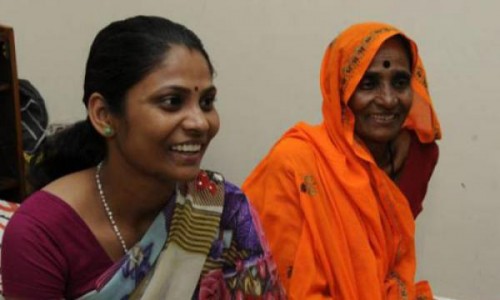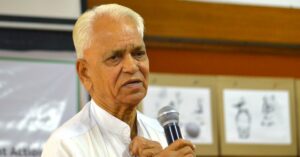The Irony Of Iconhood – The Life And Times Of Bhanwari Devi
India's rape culture has given birth to many women activists and icons. Bhanwari Devi, a victim of gang-rape in 1992, is one of them. As an epitome of sheer courage and conviction, she inspires women to take a stand for their rights. But the irony of the whole situation is that even after she has won awards, recognition and leadership status at all levels, her very basic need, justice, remains unfulfilled!

India’s rape culture has given birth to many women activists and icons. Bhanwari Devi, a victim of gang-rape in 1992, is one of them. As an epitome of sheer courage and conviction, she inspires women to take a stand for their rights. But the irony of the whole situation is that even after she has won awards, recognition and leadership status at all levels, her very basic need, justice, remains unfulfilled!
“Only justice can fill my belly, not awards,” says Bhanwari Devi in response to a question from the audience about whether or not she had been recognised by international awards. She was speaking at a meeting organised by the Alternative Law Forum, Bangalore. The previous day, along with other leaders, Bhanwari had roused a massive rally in Mangalore with her fiery calls for solidarity and action against violence against women.
The Mangalore March 8th program itself was phenomenal, from all accounts The unprecedented coalition of women’s and progressive groups (almost a hundred groups) to raise a voice against the saffronization of Karnataka’s coastal belt and increasing attacks on women, has been the outcome of dedicated work by the Forum Against Atrocities on Women (the Mahila Dourjnya Virodi Vedike, Karnataka).
With delicious irony, Bhanwari, Urmila Pawar and other invited activists were accommodated at ‘Morning Mist’, the homestay that was ransacked by right-wing goons who broke up a private celebration there last June. That none of the events, which saw the mobilization of more than 5000 women, made it to even the Bangalore editions of the dailies, leave aside the national editions, is a matter of dismay, but won’t go into that right now. (Some photos of the event are available here)

Here I just wanted to share what some of us were talking about soon after Bhanwari’s talk. Many of the questions, particularly from the press (and apparently this happened even in the meeting earlier in the day), kept pushing Bhanwari back into the victim mode and somehow managed to zero in on her vulnerabilities. It is no surprise then, that she broke down on stage even 20 years after she was gang raped.
Some of us tried to steer the discussion to the context in which she worked – the context in which women’s safety as workers led to the Vishaka Guidelines. Again, no surprise, that nothing much has changed for Sathins on the ground. As the lowest rung of the Women’s Development Program in Rajasthan, their job is to act as a bridge between the government and the masses, essentially, implementing and making any number of government schemes palatable. They continue to work in precarious conditions, for a monthly pittance of Rs 1600 (raised from Rs 200 in the 1990s, after determined work by the Mahila Vikas Abhikaran Sathin Karamchari Sangh, many of us in women’s groups in Delhi at the time were part of the support group, so are aware of just what an uphill battle that was), as described in a Saheli newsletter in 1997.
The task of “consciousness raising” or stopping “social evils” like dowry, sex selection, child marriage etc can be extremely precarious, especially at the village level with deeply entrenched feudal, caste and patriarchal structures. How many of us, asked one Shyama Narang in the audience, would enter people’s houses and demand that they stop child marriage or refuse to take dowry? Bhanwari was raped while attempting to overturn exactly these sorts of practices. Needless to say, there is no job security, no transport, and no support at all from the government for doing this risky work. This is only part of the larger critique of the WDP.
For someone who has worked in the government-run Women’s Development Program, it was somewhat ironic that her focus was on individual effort, collective action and non-government efforts if any change was to come about. She spoke of her efforts to educate her daughter Rameshwari (a bright and confident young woman who accompanied her to Mangalore-Bangalore) – she is now an MA B.ed and teaches in a school. Bhanwari spoke of the support she had received from her husband, activists in Jaipur and women’s solidarity in general. As for the rape case, Bhanwari does not talk much about, frustrated by the legal process and the appeal by her rapists pending in the High Court.
It is deeply ironical that the icon of the Vishaka Guidelines to deal with sexual harassment at the workplace finds the whole effort of law reform utterly futile and of no real help to women. Her response to deal with perpetrators of violence against women is to round them up and beat them. She was also in favour of death penalty for rapists, while responding to a question from a journalist in the audience: what should be done about the juvenile perpetrator of the ‘Delhi gang rape”?
Bhanwari’s anguished response underlines once more why the best opportunity to undertake law reform might not be during times of trauma, emotional distress or mass mobilization, despite popular notions or even a progressive groups’ understanding of “striking while the iron is hot”. The job of reviewing or making laws is better done when one is somewhat removed from the situation. It is in the nature of Commissions and government response to agitations that they pick and choose what suits the status quo, but to appear to be responding to popular sentiment and “public mood” (however that is defined) gives the regime brownie points that the feminists are loathe to give.
As for Bhanwari, her life goes on, and that’s the wonderful part. True grit, impassioned activist, flame of hope – all the clichés in our lexicon can’t even begin to describe her.
This story made me
-
97
-
121
-
89
-
167
Tell Us More
We bring stories straight from the heart of India, to inspire millions and create a wave of impact. Our positive movement is growing bigger everyday, and we would love for you to join it.
Please contribute whatever you can, every little penny helps our team in bringing you more stories that support dreams and spread hope.



















